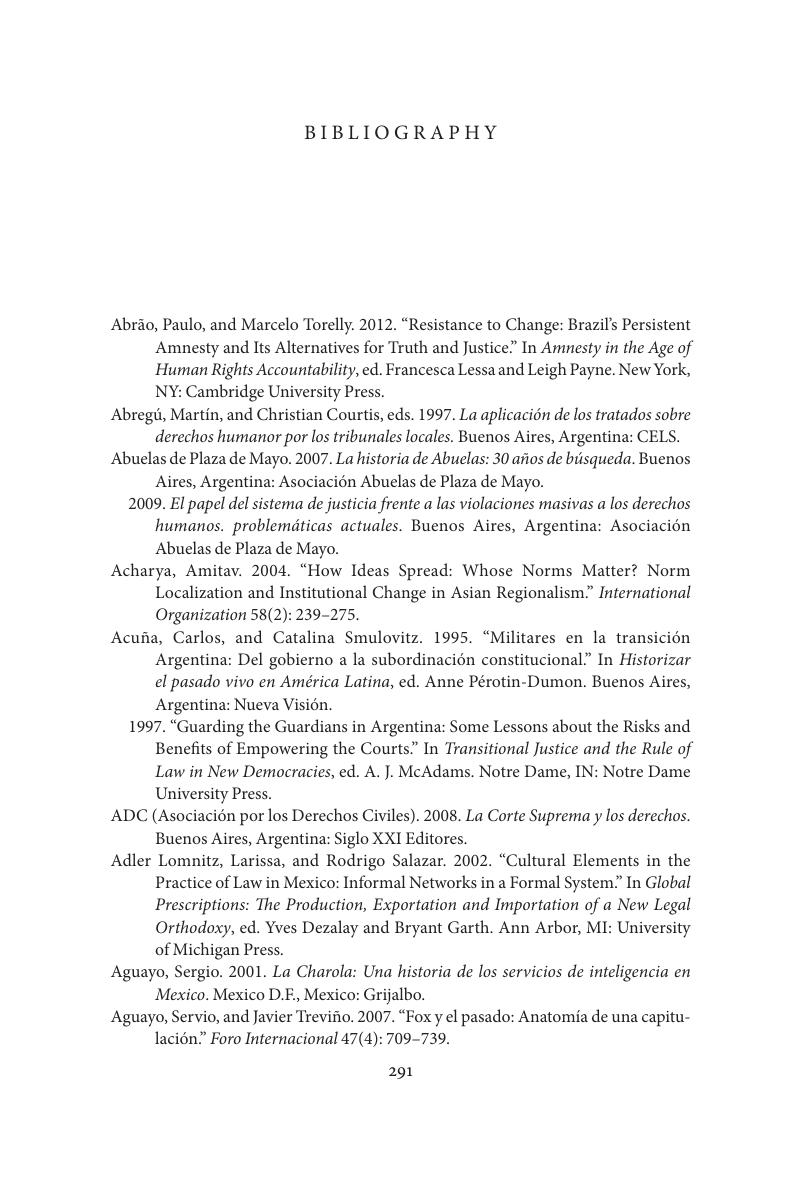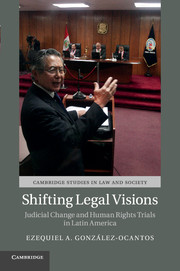Book contents
- Shifting Legal Visions
- Cambridge Studies in Law and Society
- Shifting Legal Visions
- Copyright page
- Dedication
- Dedication
- Contents
- Figures
- Tables
- Acknowledgments
- 1 From Unresponsive to Responsive Judiciaries
- 2 Legal Preferences and Strategic Litigation
- 3 Argentina
- 4 Peru
- 5 Mexico
- 6 Comparative Perspectives on the Problem of Legal Preferences
- Bibliography
- Index
- Series page
- References
Bibliography
Published online by Cambridge University Press: 05 August 2016
- Shifting Legal Visions
- Cambridge Studies in Law and Society
- Shifting Legal Visions
- Copyright page
- Dedication
- Dedication
- Contents
- Figures
- Tables
- Acknowledgments
- 1 From Unresponsive to Responsive Judiciaries
- 2 Legal Preferences and Strategic Litigation
- 3 Argentina
- 4 Peru
- 5 Mexico
- 6 Comparative Perspectives on the Problem of Legal Preferences
- Bibliography
- Index
- Series page
- References
Summary

- Type
- Chapter
- Information
- Shifting Legal VisionsJudicial Change and Human Rights Trials in Latin America, pp. 291 - 314Publisher: Cambridge University PressPrint publication year: 2016



